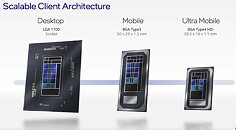
AAEON Technology Validates Ubuntu Pro on Its Intel-Based Industrial Systems
At AAEON Technology, we recognize growing demand for secure and reliable industrial systems. In collaboration with Canonical, AAEON Technology validates Ubuntu Pro across our Intel-based industrial systems. Each unit comes with a preinstalled Ubuntu image, an Ubuntu Pro license sticker, and 10 years of Canonical-backed updates for ongoing security and maintenance. "This collaboration means our customers benefit from cutting-edge hardware paired with the secure, long-term support offered with Ubuntu Pro enabled. With ongoing updates, they're always protected, allowing them to focus on their core goals," said Victor Lai, Managing Director at AAEON.
Ubuntu Pro provides enterprise-level security, compliance, and long-term stability for industrial and edge applications. It meets strict regulatory standards while delivering high performance in demanding environments.
Ubuntu Pro provides enterprise-level security, compliance, and long-term stability for industrial and edge applications. It meets strict regulatory standards while delivering high performance in demanding environments.


















































